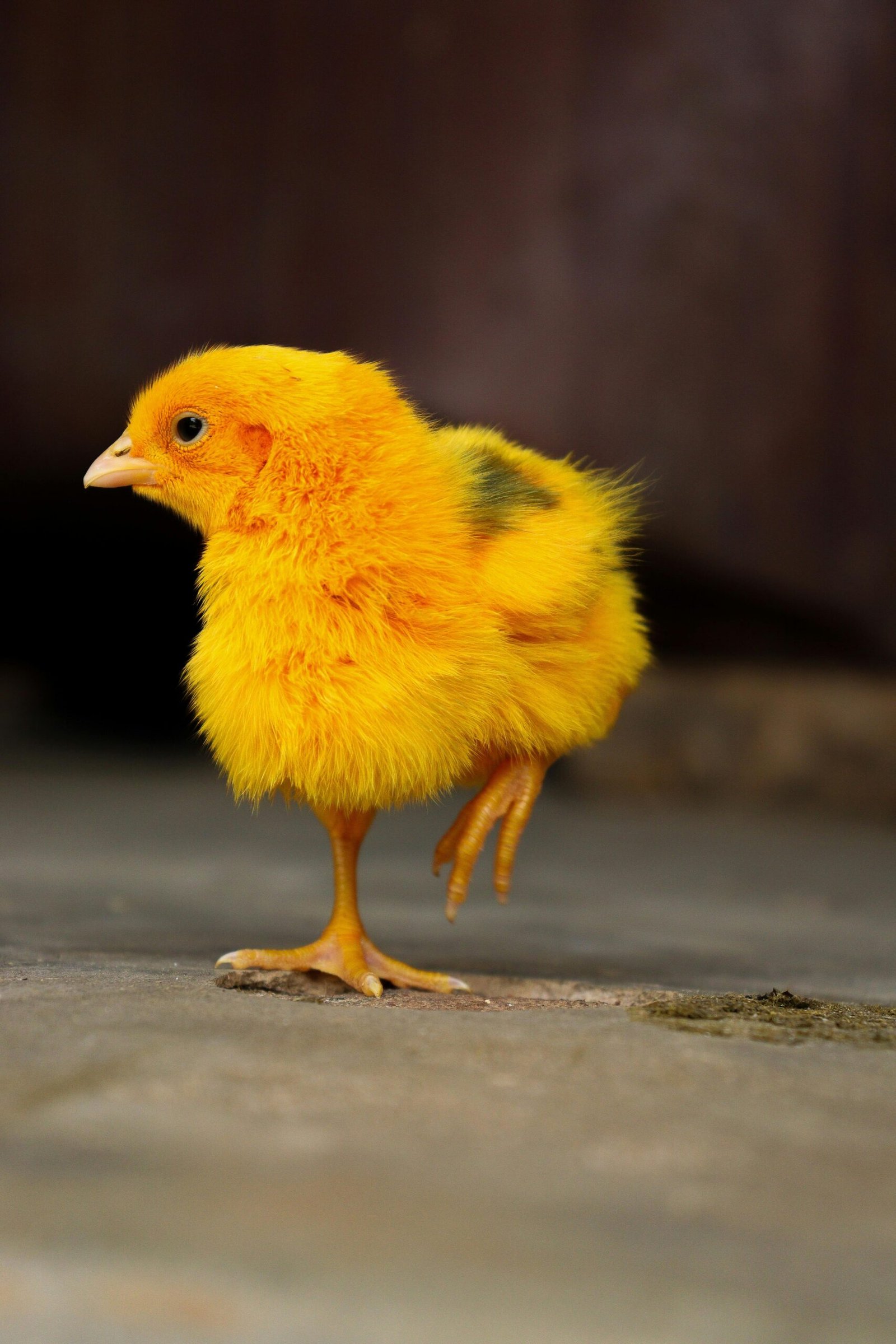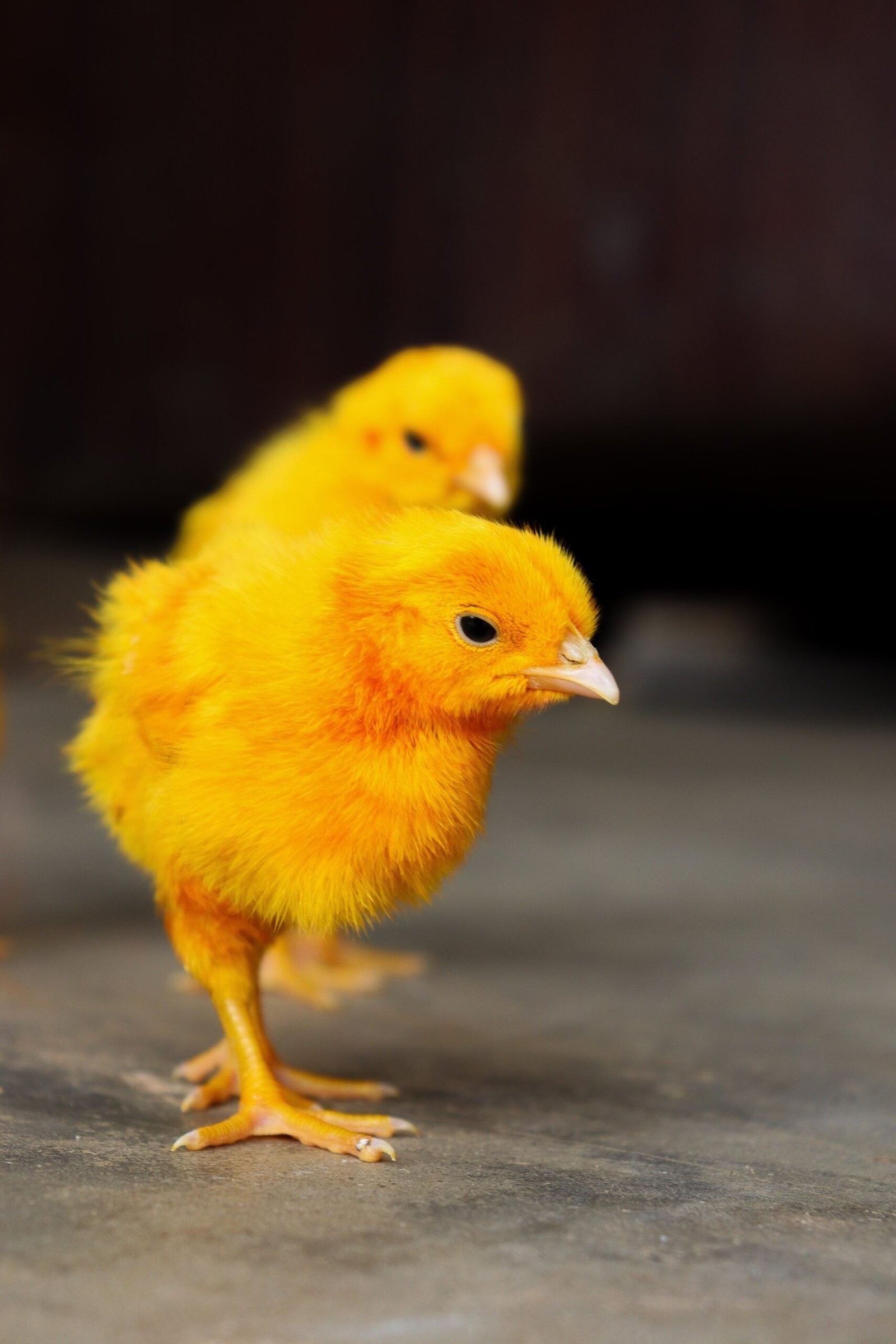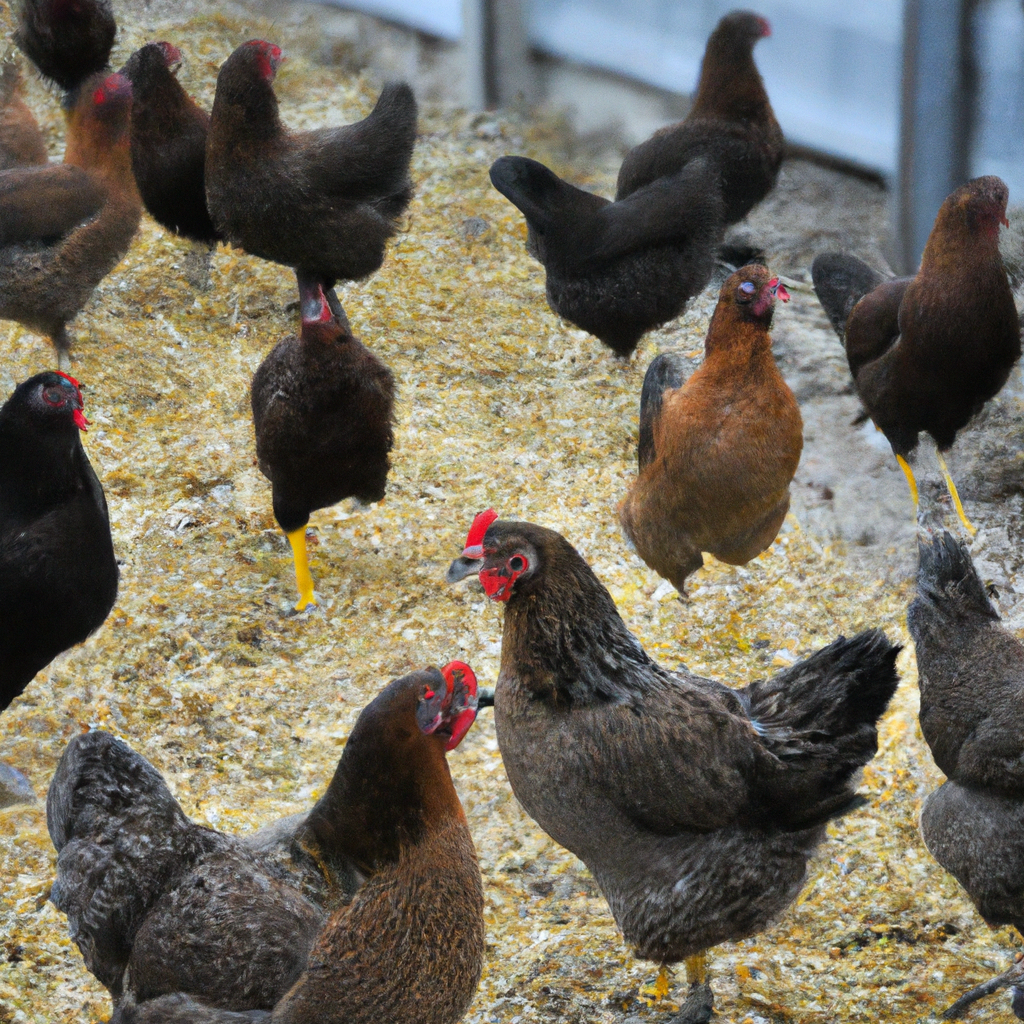
Are you interested in raising meat chickens for butchering but unsure about the ideal space for them? Look no further! In this article, we will explore the perfect conditions and space requirements for raising healthy and happy meat chickens. Whether you have a large backyard or limited space, we will provide you with valuable insights and practical tips to ensure a successful venture. Get ready to embark on a rewarding journey of raising your own chickens for butchering!

Choosing the Right Location
Climate Considerations
When choosing a location for your chicken coop, it’s important to consider the climate of your area. Chickens are sensitive to extreme temperatures, so you’ll want to ensure that their environment is suitable for their needs. In hot climates, provide shade and cooling options such as misters or fans. In cold climates, you may need to insulate the coop or provide additional heat sources. Understanding the climate of your area will help you create a comfortable environment for your chickens.
Availability of Resources
Another crucial factor to consider when choosing a location for your chicken coop is the availability of resources. Chickens require access to fresh water, feed, and sunlight. It’s important to have a water source nearby and ensure that it is easily accessible for cleaning and refilling. Additionally, consider the proximity of your coop to a feed store or a reliable source of poultry feed. Finally, chickens need access to sunlight for vitamin D production, so choose a location that allows for ample natural light.
Proximity to Market
If you plan to sell or consume your meat chickens, the proximity to the market should also be taken into consideration. Transporting live chickens can be stressful for the birds, so minimizing travel time can help minimize their discomfort. Additionally, having a nearby market can make it easier for you to sell your chickens or connect with potential buyers. Consider the convenience and feasibility of reaching your target market when selecting the location for your chicken coop.
Designing the Chicken Coop
Size and Layout
When designing your chicken coop, the size and layout are essential considerations. The coop should provide enough space for the number of chickens you plan to raise, allowing each bird to have adequate room to move, perch, and nest comfortably. As a general guideline, each chicken should have a minimum of 4 square feet of space inside the coop. Additionally, consider the layout of the coop to ensure easy access for cleaning, egg collection, and monitoring the health of your chickens.
Ventilation and Lighting
Proper ventilation and lighting are crucial for the health and well-being of your meat chickens. Good airflow helps remove moisture, ammonia, and other odors from the coop, reducing the risk of respiratory problems. Adequate lighting is also necessary, as it affects the chickens’ daily routines and egg production. Natural light is preferable, but if it’s not feasible, you can supplement with artificial lighting. Ensure that your coop has windows or vents to allow fresh air in and natural light to enter.
Bedding and Flooring
The choice of bedding and flooring materials in your chicken coop will affect the cleanliness and comfort of your chickens. Popular bedding options include straw, wood shavings, or sand. These materials serve to absorb moisture, control odor, and provide a comfortable surface for your chickens to walk on. As for the flooring, it’s important to choose a material that is easy to clean. Concrete, for example, is a popular choice as it is durable, low-maintenance, and resistant to pests. A clean and comfortable coop is essential to promote the well-being of your meat chickens.

Fencing and Security
Types of Fencing
Proper fencing is necessary to protect your meat chickens from predators and to keep them contained within a designated area. There are various types of fencing options you can choose from, depending on your needs and budget. The most commonly used fencing options for chicken coops are chicken wire, hardware cloth, and electric netting. Chicken wire is versatile, cost-effective, and effective at keeping out smaller predators. Hardware cloth, with smaller mesh size, provides better protection against predators such as raccoons or snakes. Electric netting can provide temporary or portable fencing solutions and offers excellent predator deterrence.
Predator Prevention Measures
In addition to proper fencing, it’s important to implement predator prevention measures to ensure the safety of your meat chickens. Consider installing predator-proof locks on all doors, windows, and access points to the coop. Secure the bottom of the coop and the fencing to prevent predators from digging underneath. Regularly inspect the coop for any signs of damage or vulnerabilities that could allow predators to gain access. A secure and well-protected coop will give you peace of mind and keep your meat chickens safe.
Access Points
When designing your chicken coop, it’s crucial to plan for convenient access points for both you and your chickens. Consider adding a separate human entrance with a secure lock to allow easy access for feeding, cleaning, and collecting eggs. Additionally, incorporate multiple small access points for the chickens to enter and exit the coop freely. These access points can reduce crowding and allow for smoother movement within the coop. Taking the time to strategically plan the access points in your coop will contribute to its functionality and ease of use.
Feeding and Watering Systems
Feed Storage and Dispensing
Efficient feed storage and dispensing systems are essential for managing your meat chickens’ nutrition. Choose a secure storage area for your feed that protects it from moisture, pests, and rodents. Consider using airtight containers or metal bins to prevent spoilage or contamination. To dispense the feed, you can use a gravity feeder or a treadle feeder. Gravity feeders ensure a continuous supply of feed, while treadle feeders require the chickens to step on a platform to open the feeding trough, reducing the risk of pests accessing the feed.
Automatic Waterers
Providing adequate water is vital for your meat chickens’ health and productivity. Automatic waterers can save you time and effort in maintaining a clean and accessible water source for your birds. Choose waterers suitable for meat chickens that can hold a sufficient amount of water and are easy to clean and refill. Automatic waterers with nipple or cup systems have proven to be effective in preventing water contamination and reducing spillage. Regularly monitor the water levels and cleanliness to ensure your meat chickens have access to fresh, clean water at all times.
Feeding Schedule
Establishing a feeding schedule for your meat chickens is important to ensure they receive the necessary nutrients and maintain healthy growth. Provide a constant supply of feed throughout the day and adjust the quantity based on the age and size of the chickens. For meat chickens, a high-protein feed with balanced nutritional content is recommended to support rapid growth. Monitor their feeding behavior and adjust the feeding schedule as needed. Regularly cleaning the feeders and checking for any signs of spoilage or contamination will help maintain the health and well-being of your chickens.

Managing Chicken Health
Biosecurity Measures
Implementing biosecurity measures is crucial to prevent the introduction and spread of diseases among your meat chickens. Practice good hygiene by regularly cleaning and disinfecting the coop, equipment, and footwear. Limit access to the coop to only essential personnel and visitors who follow proper biosecurity protocols. Quarantine new birds before introducing them into the flock and regularly monitor your chickens for any signs of illness. Consult with a veterinarian to develop a biosecurity plan tailored to your specific situation and geographic area.
Vaccination Programs
Vaccinating your meat chickens can provide protection against common diseases and help maintain their health. Consult with a veterinarian to determine the appropriate vaccination program for your area and the specific diseases prevalent in your region. Vaccinations can be administered through drinking water, eye drops, sprays, or injections. Regularly track and document the vaccination history of your chickens to ensure they receive the necessary vaccinations at the appropriate times.
Parasite Control
Maintaining good parasite control is essential for the health and well-being of your meat chickens. External parasites like mites and lice can cause discomfort and health issues, while internal parasites like worms can lead to decreased growth and productivity. Regularly inspect your chickens for signs of parasites and consult with a veterinarian for appropriate treatment options. Implement a regular deworming schedule and ensure that the products used are approved for use in poultry and meet the withdrawal period requirements for meat production.
Butchering and Processing Area
Separate Processing Area
Having a separate area designated for butchering and processing meat chickens is important for maintaining hygiene and food safety. This area should be separate from the chicken coop and equipped with appropriate tools and equipment for processing meat. Ensure that the area has proper ventilation to minimize odors and contaminants. Designate specific surfaces for different tasks, such as evisceration, cleaning, and packaging, to prevent cross-contamination. Keeping a clean and organized butchering and processing area is crucial to ensure the safety and quality of your meat products.
Equipment and Tools
To efficiently and safely process meat chickens, certain equipment and tools are necessary. This may include sharp knives, pluckers, evisceration tables, scales, packaging materials, and a proper drainage system. Invest in high-quality equipment that is durable and designed specifically for poultry processing. Regularly clean and maintain your equipment to prevent contamination and ensure proper functionality. Having the necessary equipment and tools readily available will make the butchering and processing process smoother and more efficient.
Waste Management
Proper waste management is crucial for maintaining a clean and sanitary butchering and processing area. Implement a waste management system that includes proper disposal of feathers, offal, and other waste materials. Consider composting certain waste materials to minimize environmental impact and optimize resource utilization. Follow local regulations and guidelines for waste disposal, and regularly clean and sanitize the processing area to prevent the buildup of contaminants. Effective waste management practices will help reduce potential health risks and ensure a safe processing environment.

Ensuring Adequate Space
Square Footage per Chicken
Providing adequate space for your meat chickens is essential for their comfort, health, and overall well-being. As a minimum guideline, each meat chicken should have around 4 to 5 square feet of indoor space inside the coop. However, keep in mind that more space can lead to better ventilation, reduced stress, and improved overall health. Consider providing additional outdoor space for your meat chickens to roam and forage, allowing them to exhibit natural behaviors and reducing the risk of overcrowding.
Outdoor Access and Pasture Rotation
Allowing your meat chickens access to the outdoors provides them with additional space and opportunities for foraging and exercise. Incorporate an outdoor area or pasture into your chicken management plan to help meet their behavioral and nutritional needs. To prevent overgrazing and maintain a healthy environment, consider implementing a pasture rotation system. This involves periodically moving the chickens to fresh pasture areas while allowing the previous areas to recover. Outdoor access and pasture rotation contribute to the overall well-being and quality of life for your meat chickens.
Avoiding Overcrowding
Overcrowding is detrimental to the health and well-being of meat chickens, often leading to increased stress, disease transmission, and reduced productivity. Avoid overcrowding by ensuring that your coop is large enough to provide ample space for your chickens. Monitor the flock dynamics and behavior to identify any signs of overcrowding, such as excessive feather pecking or aggression. If necessary, adjust the number of chickens or the size of the coop to maintain a comfortable living environment for your meat chickens.
Considerations for Breeds
Size and Growth Rate
When selecting breeds for meat production, consider their size and growth rate. Different breeds have varying growth rates and mature at different weights. Some breeds, such as Cornish Cross, are known for their rapid growth and high yield of meat. However, it’s important to note that fast-growing breeds require careful management to avoid health issues related to rapid growth. Research different meat chicken breeds and choose those that suit your production goals and management practices.
Temperament and Foraging Ability
The temperament and foraging ability of a breed can significantly impact its suitability for meat production. Look for breeds that are docile and have a calm temperament, as they are generally easier to handle and manage. Additionally, consider breeds that have a strong foraging instinct. Chickens with good foraging abilities can supplement their diet with insects, weeds, and grass, reducing your feed costs and providing nutritional enrichment.
Suitability for Meat Production
Some chicken breeds are specifically bred for meat production, while others are dual-purpose or primarily used for egg laying. Breeds like Cornish Cross or Red Broilers are popular choices for commercial meat production due to their fast growth rates and high meat yield. However, if you prefer a more traditional or heritage breed, research their meat production qualities and compare them to your specific goals and preferences. Selecting a breed suitable for meat production will help ensure a successful and rewarding meat chicken venture.
Record Keeping
Weight and Growth Tracking
Keeping detailed records of your meat chickens’ weight and growth is essential for monitoring their progress and making informed management decisions. Regularly weigh your chickens and record their weights to track growth rates over time. This information will enable you to identify any growth issues, adjust feeding programs, and identify potential health concerns. Accurate weight and growth tracking will contribute to the overall success of your meat chicken operation.
Medical History and Treatments
Maintaining thorough medical records is crucial for effectively managing the health of your meat chickens. Keep a record of any vaccinations administered, deworming schedules, and any treatments given for illnesses or injuries. Additionally, document any observations or abnormal behaviors that could indicate potential health issues. These records will help you identify patterns, track the effectiveness of treatments, and provide valuable information if you need to consult a veterinarian.
Butcher and Sale Records
If you plan to sell your meat chickens, it’s important to keep detailed butcher and sale records. This information will help you track your sales, understand customer preferences, and estimate overall profitability. Record the date of butchering, the weight of each chicken, and any additional expenses incurred during the butchering process. Keeping thorough records will not only help you manage your business effectively but also provide valuable data for future planning and decision-making.
Neighborly Considerations
Noise and Smell
When raising meat chickens, it’s important to consider the potential impact on your neighbors. Chicken coops can generate both noise and smell, which may lead to complaints or conflicts. To minimize noise, avoid placing the coop close to neighboring properties, particularly bedrooms or areas where residents spend a lot of time. Additionally, proper waste management and regular cleaning of the coop can help minimize odors. Good neighborly communication and consideration can go a long way in maintaining positive relationships while pursuing your meat chicken venture.
Buffers and Barriers
To mitigate any potential negative impact on your neighbors, consider implementing buffers and barriers around your chicken coop. Planting shrubs or installing fences can provide visual barriers and reduce noise transmission. Additionally, consider utilizing sound-absorbing materials in the coop construction to minimize noise disturbances. Thoughtful planning and the implementation of appropriate barriers can help create a more harmonious relationship with your neighbors.
Communication and Cooperation
Maintaining open lines of communication with your neighbors is crucial for a successful meat chicken operation. Inform your neighbors about your plans and discuss any concerns they may have. Be responsive and receptive to feedback, addressing any issues that arise promptly and diplomatically. Cooperating with your neighbors and demonstrating a commitment to being a responsible chicken owner can help foster understanding and maintain positive relationships within your community.
In conclusion, successfully raising meat chickens for butchering requires careful consideration of various factors. From choosing the right location and designing the chicken coop to managing chicken health and maintaining good neighborly relations, each aspect plays a crucial role in ensuring a successful and satisfying meat chicken venture. By following the guidelines outlined in this article, you can create a comfortable and productive environment for your meat chickens, leading to healthy growth and quality meat products.







